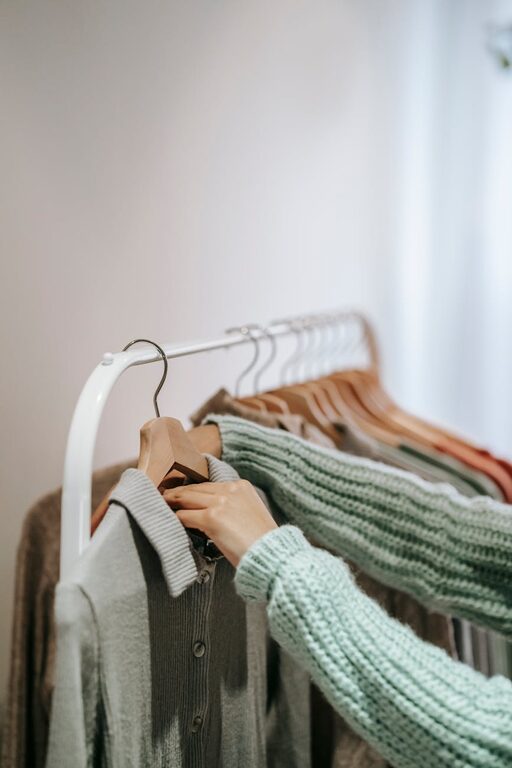
Building a capsule wardrobe is a practical approach to simplifying your closet while maximizing your outfit options. Whether you’re looking to save time in the morning, reduce clutter, or shop more mindfully, a capsule wardrobe offers a streamlined, stylish solution. In this guide, we’ll walk you through the steps to create your own basic capsule wardrobe that fits your lifestyle and personal taste.
What is a Capsule Wardrobe?
A capsule wardrobe is a curated collection of essential clothing pieces that are versatile, timeless, and can be mixed and matched easily. The goal is to have a smaller, high-quality wardrobe that eliminates decision fatigue and helps you dress effortlessly every day.
Unlike fast fashion, a capsule wardrobe focuses on quality over quantity, prioritizing pieces that you truly love and that suit your lifestyle.
Benefits of a Capsule Wardrobe
– Saves Time: Fewer pieces mean less time deciding what to wear.
– Reduces Clutter: A tidy closet with only needed items.
– Saves Money: Investing in quality pieces reduces frequent buying.
– Sustainable: Encourages mindful consumption and less waste.
– Easier Packing: Simplifies travel packing with versatile clothes.
—
Step 1: Assess Your Lifestyle and Needs
Before selecting items, consider your daily activities:
– What is your typical dress code? (Casual, business, active)
– What climates do you live in or visit often?
– Are you looking for seasonal capsules or year-round basics?
– What colors and styles do you prefer and feel confident in?
Understanding your lifestyle will guide your clothing selection, ensuring your wardrobe works for you.
—
Step 2: Choose a Color Palette
Limiting your colors makes mixing and matching easier. Start with neutral colors such as:
– Black
– White
– Gray
– Navy
– Beige or camel
Add 1–2 accent colors that complement your neutrals and suit your personal style. This creates cohesion and flexibility, helping you create multiple outfits from fewer items.
—
Step 3: Select Your Essential Pieces
A basic capsule wardrobe usually includes 30-40 items – including tops, bottoms, outerwear, and shoes. Here’s a general list to get you started:
Tops
– 3-5 casual shirts or t-shirts (neutral and accent colors)
– 2-3 blouses or button-ups
– 1-2 sweaters or cardigans
– 1 lightweight jacket or blazer
Bottoms
– 2-3 pairs of jeans or pants (neutral colors)
– 1-2 skirts or shorts (seasonal)
– 1 pair of versatile trousers or chinos
Dresses
– 1-2 casual or day dresses
– 1 versatile dress that can be dressed up or down
Outerwear
– 1 coat suited to your climate (e.g., trench, wool coat)
– 1 lightweight jacket (e.g., denim, bomber)
Shoes
– 1 pair of casual sneakers
– 1 pair of flats or loafers
– 1 pair of dress shoes or boots
Accessories (Optional)
– Neutral scarf or hat
– Simple jewelry pieces
– A functional handbag or backpack
—
Step 4: Purge and Organize Your Closet
Before adding new items, clear out what you no longer wear or need. Ask yourself:
– Do I wear this regularly?
– Does it fit well and feel comfortable?
– Is it in good condition?
– Does it coordinate with my chosen palette?
Donate or recycle items that don’t fit the criteria. Organize the remaining clothes by category and color. This will make shopping for new pieces easier and your daily selections faster.
—
Step 5: Shop Mindfully
When buying new items, prioritize:
– Quality: Look for durable fabrics and well-made details.
– Fit: Clothes should be comfortable and flattering.
– Versatility: Can the item be paired with multiple pieces?
– Timelessness: Avoid overly trendy items in favor of classic styles.
Try to shop from brands that focus on sustainability and ethical production when possible.
—
Step 6: Mix and Match to Create Outfits
Experiment with combining your pieces in different ways. The goal is to have more outfit possibilities than items in your wardrobe. For example:
– Pair a white shirt with jeans for casual days.
– Layer a blazer over a simple dress for a polished look.
– Use cardigans with skirts or trousers for versatility.
Keep notes or create a lookbook with your favorite outfit combinations to make dressing quicker.
—
Additional Tips for Maintaining Your Capsule Wardrobe
– Review your wardrobe each season to adjust for weather and lifestyle changes.
– Repair or tailor clothing as needed to extend their life.
– Avoid impulse purchases by sticking to your color palette and style.
– Keep a list of items you want to add or replace and prioritize quality.
—
Final Thoughts
Building a basic capsule wardrobe is a rewarding way to enhance your style while simplifying your life. It encourages thoughtful consumption, reduces stress, and ensures you always have something to wear that makes you feel confident. Start small, be patient, and enjoy the process of creating a wardrobe that truly fits you.
Happy wardrobe building!
